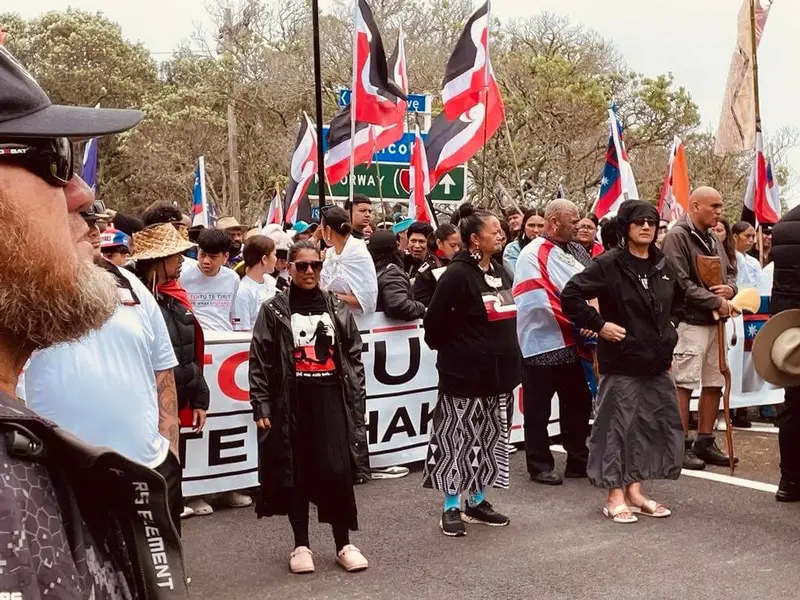Over 40,00 people marched to the parliament on Tuesday in a major protest against a New Zealand bill that would reinterpret the Treaty of Waitangi. The protest marked the end of a nine-day hīkoi, a nonviolent protest that gained national support. This was one of the biggest hīkoi in New Zealand, with participants marching through the streets of Wellington while carrying Māori flags.
A junior member of the Act political party introduced the proposed Treaty Principles bill, which aims to reconsider treaty principles. Act Party Leader David Seymour stated that rather than promoting togetherness, the treaty’s changing interpretation had widened racial gaps. “Like everybody else, whether their ancestors came here a thousand years ago, like some of mine did, or just got off the plane at Auckland International Airport this morning to begin their journey as New Zealanders,” stated Seymour, who is of Māori descent.
The large groups of people on Wellington’s rail network coming to the city’s capital showed how important this protest is, according to the city’s transport chair, Thomas Nash. Ngā Wai hono i te pō led, and the Māori Queen led thousands of people onto the parliament grounds to demand that their treaty rights be respected.
“We won’t be supporting the bill beyond second reading and therefore it won’t become law,” said Prime Minister Christopher Luxon, dismissing any possibility that the bill would become law. Co-leader of Te Pāti Māori (Maori Party), Debbie Ngarewa-Packer, condemned attempts to undermine indigenous rights and accused the government of stirring conflict.
Whereas people like Stan Lingman with Māori and Swedish lineage came together to protect their heritage and the future of their children from alleged dangers. Participants learned the haka moves from the protest organized as a sign of unity for preserving the treaty. According to various people, this hīkoi united different communities to protect their cultural heritage against the New Zealand bill.









